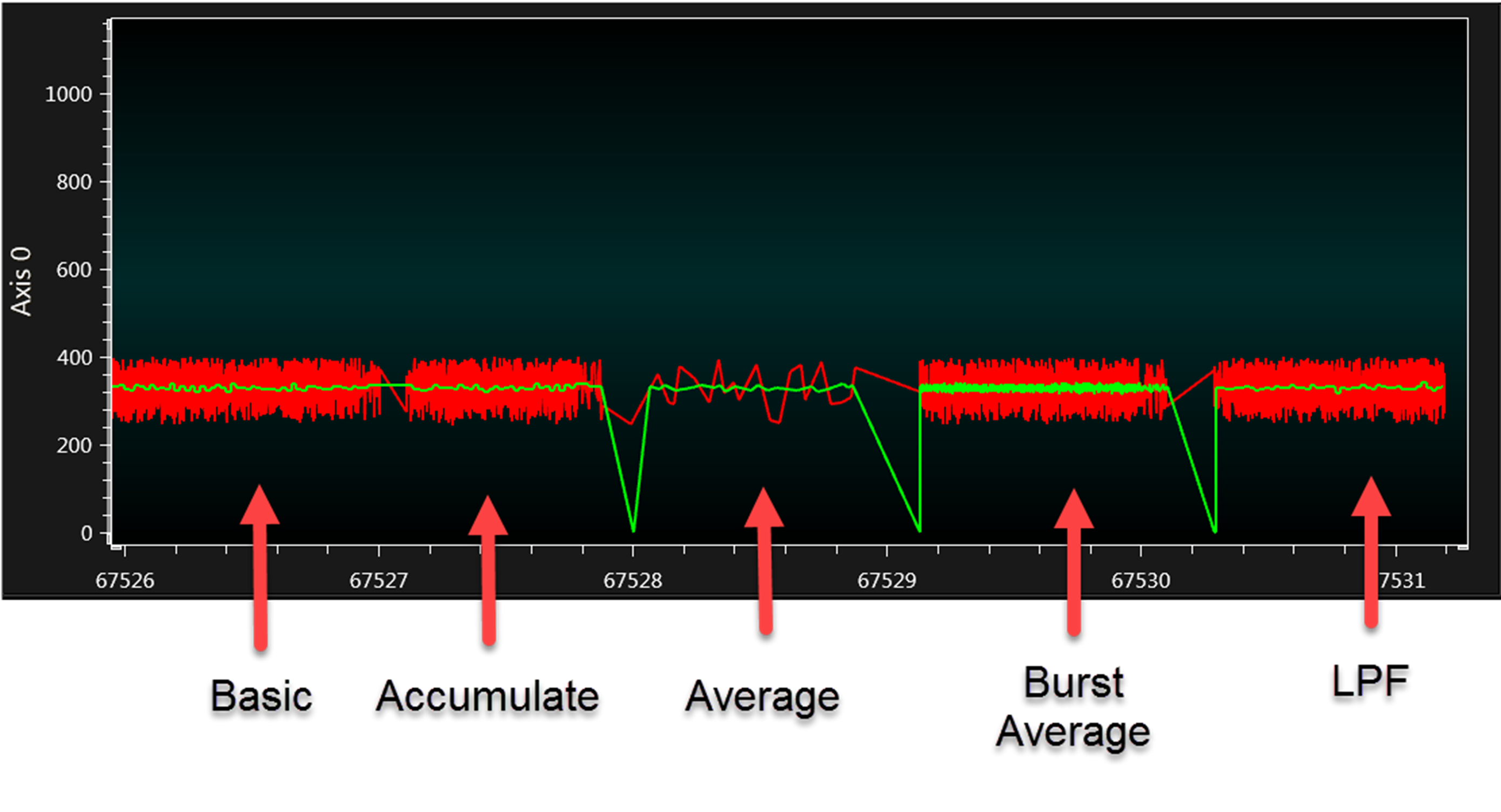4.5.6 Graph Illustration: All Modes Difference
Noise suppression result on DC signal with random noise in all modes is illustrated in one graph in Figure 4-26.

| Basic | Accumulate | Average | Burst Average | LPF | |
|---|---|---|---|---|---|
| Pros | The number of samples to be accumulated for averaging is not limited whereas it is limited to 64 for other ADC2 modes. | ADACC register gives accumulated values of up to 64 samples and ADFLTR register gives an average value of all the accumulated samples so, software overhead can be avoided. | No software overhead for sample accumulation and averaging as ADACC and ADFLTR registers are available. | Noise suppression from an AC signal can be achieved. No software overhead while averaging. | Removes unwanted high frequency signals from an AC input signal. |
| Cons | Software overhead of accumulating and averaging needs to be handled in code. | The number of samples accumulated check and clearing of ADACC registers need to be handed in code. | The number of samples to be accumulated is limited to 64. | Noise reduction comparatively less effective. ADC sampling rate is affected by the number of samples accumulated in a single burst. | The ADCRS bits act as an RC time constant in DC signals. With increased ADCRS, the time it takes for the filtered output to achieve a steady state increases. |
